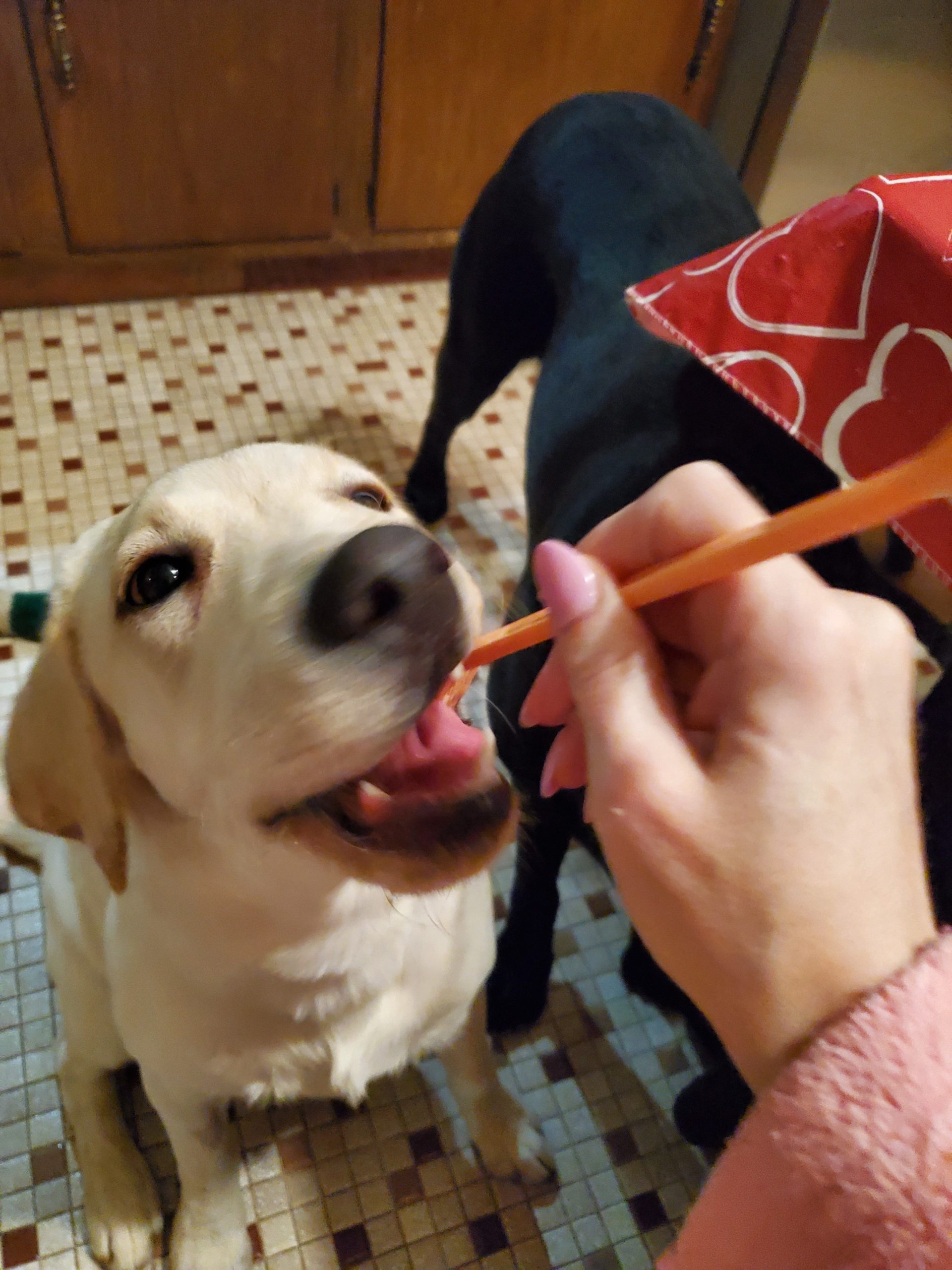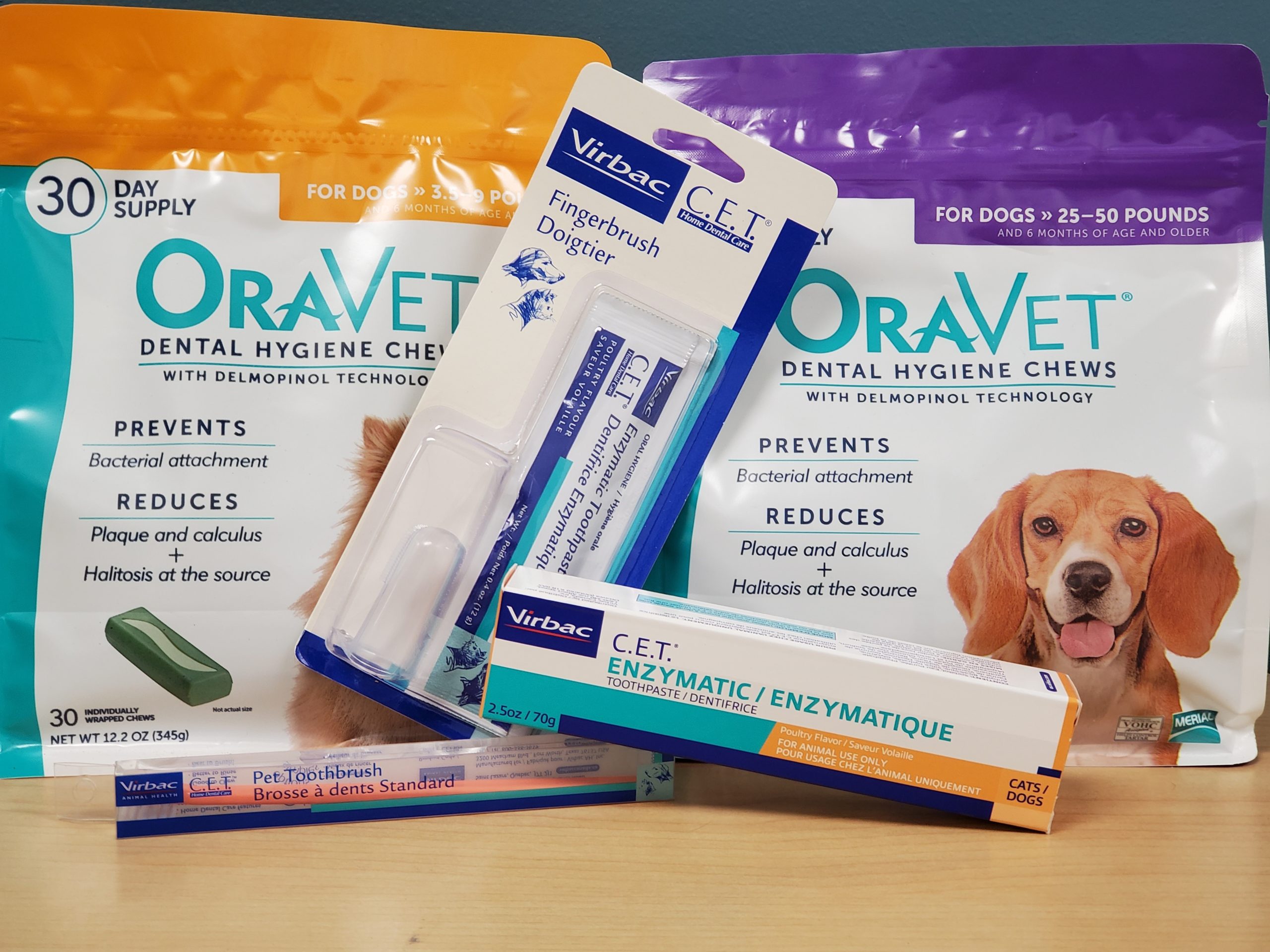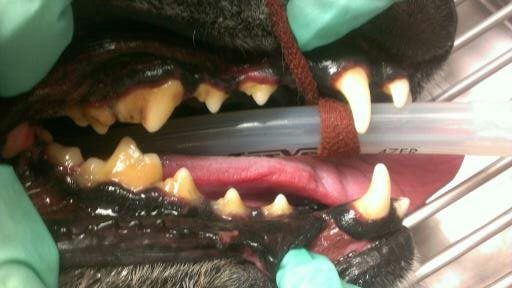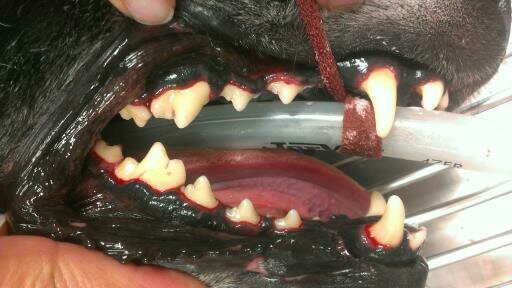
How to Maintain Your Pet’s Pearly Whites
An Everyday Guide to Dental Health
An apple a day keeps the doctor away. But what keeps the dentist away? More importantly for our purposes, what keeps the veterinary dentist away? An honest answer is that you probably shouldn’t.
February is dental health month and it’s time to put the spotlight on one of the most common diseases that we see in dogs and cats. Did you know that an estimated 85% of pets have dental disease by the age of 3 years?!!
So, what can we do to help prevent dental disease in our pets?
Brush! Brush! Brush!
Think back to this morning and how your mouth felt when you first woke up. Before you brushed your teeth. Now, imagine you didn’t brush. How would your teeth feel? Now, imagine never brushing your teeth. Pretty gross isn’t it?
This is what pets experience throughout their life. Taking 30 seconds to a minute out of your day to brush your pet’s teeth can make a world of difference. Although it’s easier to introduce your pet to this at a young age, it’s possible to start in pets that are older. My previous dog, Piper, was 10 years old when I started brushing her teeth. FYI, she loved it!


Here’s a few quick tips to help get started:
- Use a veterinary toothpaste, preferably in a flavor that your pet enjoys. My girls LOVE the poultry flavored toothpaste!
- Use a toothbrush designed for pets. Small finger brushes work great for cats and small dogs. Longer toothbrushes will help to reach the back teeth in our larger crowd and save our fingers from being chomped!
- Make it fun for your pet. Praise them throughout, pet them, sing fun little teeth brushing songs (ok, maybe that’s just me) or whatever you can to make it an enjoyable experience.
- Not sure how to start – check out our Facebook video on teeth brushing. Wynter had a blast making it!
Chew It Up

Let’s face it, not all our pets are going to be tolerant of teeth brushing. I have rarely seen a cat that allows it. Fear not, there are still ways to help maintain dental health.
Your best bet after teeth brushing is to use a quality dental chew. However, not all dental chews are created equal so it’s important to know your product. The most important property of dental chews is the chewing itself. This acts mechanically, almost like a toothbrush. If your pet won’t chew on it, it won’t help.
Some dental chews will have the added benefit of enzymes to help break down the plaque and tartar. These are more effective in helping to maintain dental health. It’s still important for your pet to chew on them for a while to allow those enzymes to do their job.
It’s also important to give dental chews frequently but at the same time making sure we’re not adding extra calories and causing weight gain.
A Good Old-Fashioned Cleaning
Most of us are heading to our dentist about every 6 months for a routine cleaning. Why should we be surprised that our pets, (who are not brushing and flossing daily) would need a cleaning at least every year or so.
I know it sounds scary since our pets must go under general anesthesia for their cleaning, but it will truly help their overall health and wellbeing. So, what happens during a dental cleaning for your pet?
Once your furry friend is under anesthesia the real work begins.
We start with dental x-rays – this allows us to see any evidence of infection or disease at base of the root. This causes discomfort for your pet and if we see disease, then the tooth needs to be removed. Cats, in particular, can have abnormalities where the body reabsorbs the tooth and sometimes this can only be seen on x-ray. Again, this is painful for the cat.
Any teeth that need to be extracted are removed. How we accomplish this depends on a variety of factors including how loose the tooth is, how many roots the particular tooth has, how much the gums have receded as well as several other factors.
The teeth are then cleaned and polished. An ultrasonic scaler is used to clean all the plaque and tartar from the teeth. Once the teeth are clean, they are evaluated for any abnormalities such as pockets under the gumline and, of course, cavities.
Finally, the teeth are polished just as ours are following a cleaning. And yes, we do have multiple flavors from mint to bubblegum to cherry. Although I think our pets would be more appreciative of chicken or peanut butter flavor.
Keep an eye on our Facebook page for a behind the scenes walk through a typical dental cleaning procedure.


Dental disease is not a condition that should be ignored. Bacteria from the mouth can cause problems for other organs such as the heart, liver and kidneys. That doesn’t even take into account the mouth pain. I have had several owners tell me they have a whole new dog following a cleaning and extraction of diseased teeth.
Not sure if
your furry family member could use a dental cleaning? Stop by Capitol Illini at
our Wabash or Chatham locations to have your pet’s teeth evaluated. Since it’s
dental health month we’ll be running special dental promotions throughout
February. Schedule your furry friend’s cleaning today!
